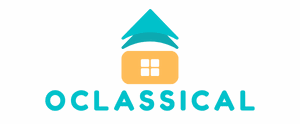In a world where pajamas are the new power suits, remote work platforms have become the unsung heroes of productivity. With countless options sprouting up like weeds in a garden, choosing the right one can feel like picking the perfect avocado—tricky and a little stressful. It’s no wonder that many professionals are left wondering which platform will help them crush deadlines without crushing their spirits.
Table of Contents
ToggleOverview of Remote Work Platforms
Remote work platforms serve as vital resources for teams navigating remote work dynamics. These platforms enhance collaboration, streamline communication, and promote productivity among teams. Numerous options exist, each featuring unique tools and functionalities tailored to diverse needs.
Slack stands out for its instant messaging capabilities, allowing real-time communication across teams. Zoom excels in video conferencing, providing features like screen sharing and breakout rooms, ideal for virtual meetings. Microsoft Teams integrates seamlessly with other Microsoft tools, facilitating collaboration through shared documents and chats.
Trello offers a visual approach to project management, catering to those who prefer organized boards to track tasks. Asana enhances task management with detailed project timelines and deadlines. Additionally, Notion combines note-taking, task management, and databases, offering an all-in-one workspace for teams.
Sophisticated data security features play a crucial role in the selection of remote work platforms. Tools like Google Workspace prioritize user privacy and compliance, ensuring sensitive information remains protected. When considering these platforms, assessing customization options helps teams align functionalities with workflows, ultimately improving efficiency and engagement.
User experience vastly influences the effectiveness of remote work platforms. Intuitive interfaces attract users, promoting broader adoption among team members. Feedback mechanisms enable employees to suggest improvements, fostering an environment of constant refinement.
Choosing the best remote work platform depends on specific team requirements and preferred functionalities. By analyzing features, integration capabilities, and user experiences, professionals can navigate the multitude of available options with confidence. Embracing the right tools enhances productivity and supports a balanced work-life dynamic.
Key Features to Consider

Choosing the right remote work platform involves evaluating various key features. Understanding these factors ensures that teams select tools that enhance productivity and meet specific needs.
User Interface and Experience
An intuitive user interface simplifies navigation and promotes efficiency. Ease of use fosters quicker onboarding for new users. A smooth experience encourages consistent engagement, minimizing distractions. Visual appeal influences user satisfaction and willingness to adopt the platform. Responsive designs provide seamless access across devices, enhancing flexibility for remote work.
Security and Privacy Measures
Robust security features protect sensitive information from unauthorized access. End-to-end encryption secures data during transmission. Regular software updates address vulnerabilities, maintaining system integrity. Privacy policies should clearly define how user data is handled. Compliance with regulations like GDPR ensures that platforms meet legal standards for data protection.
Integration with Other Tools
Integration capabilities enhance workflow by connecting various applications. Compatibility with widely used software streamlines operations. Users benefit from centralized data management, reducing the need to switch between platforms. Flexible APIs allow for custom integrations tailored to specific business requirements. Seamless connections can increase overall productivity and team collaboration.
Popular Remote Work Platforms
Numerous remote work platforms enhance team collaboration and boost productivity. Evaluating each one helps identify the best fit for specific needs. Here are a few top options.
Slack
Slack excels in real-time communication and integrates seamlessly with various tools. It offers channels for specific topics, allowing teams to organize discussions for efficiency. Users appreciate features like thread replies and direct messaging, which ensure clear communication. Additionally, Slack’s file-sharing capabilities eliminate email overload, streamlining information flow. Security features, including encryption, safeguard sensitive data, making it a reliable choice for teams.
Zoom
Zoom leads the way in video conferencing solutions with its user-friendly interface. Teams enjoy features such as virtual backgrounds, breakout rooms, and screen sharing, facilitating interactive meetings. Users can record sessions for future reference, ensuring valuable insights are never lost. Zoom also supports large gatherings, accommodating hundreds of participants, which is ideal for webinars or training sessions. Advanced security measures protect meetings, ensuring privacy and data integrity.
Trello
Trello revolutionizes project management with visual boards that enhance task organization. Users can easily create cards for individual tasks and move them across customizable columns. This intuitive drag-and-drop interface simplifies workflow management for teams. Collaboration features, such as comments and attachments, keep everything in one place, enhancing productivity. The platform integrates with various apps, extending its functionality, and allowing teams to tailor their working environment.
Pros and Cons of Each Platform
Examining the advantages and disadvantages of popular remote work platforms helps teams make informed decisions tailored to their needs.
Platform A Advantages and Disadvantages
Platform A offers seamless integration with a variety of tools, enhancing productivity. Its user-friendly interface simplifies navigation, making it easy for team members to adapt. A robust security framework ensures data protection, which is crucial for sensitive projects. However, its pricing model can be restrictive for small teams. Customization options may also fall short, limiting its flexibility. Lack of offline access might hinder productivity during internet outages.
Platform B Advantages and Disadvantages
Platform B excels in video conferencing features, promoting engagement through tools like breakout rooms and virtual backgrounds. Easy scheduling options streamline the meeting process, fostering better communication. Participants benefit from high-quality video and audio capabilities. On the downside, bandwidth requirements can be challenging in low-connectivity areas. Some users report difficulties with its user interface at first. Limited project management features may necessitate supplementary applications.
Platform C Advantages and Disadvantages
Platform C shines in project management with visual task boards that enhance workflow organization. Collaboration tools allow team members to update status in real time, promoting transparency. Integrations with other applications extend its capabilities significantly. Nevertheless, its steep learning curve might deter new users. Some advanced features come at a higher price point, which could concern budget-conscious teams. A lack of comprehensive reporting can hinder performance tracking, impacting decision-making.
Choosing the right remote work platform is crucial for enhancing productivity and collaboration in today’s digital landscape. With numerous options available professionals must carefully evaluate each platform’s features to find the best fit for their unique needs.
Prioritizing user experience data security and integration capabilities can significantly impact a team’s efficiency. By understanding the strengths and weaknesses of popular platforms like Slack Zoom Trello and Asana teams can make informed decisions that support their workflow.
Ultimately the right choice not only streamlines processes but also fosters a healthier work-life balance enabling teams to thrive in a remote environment.



